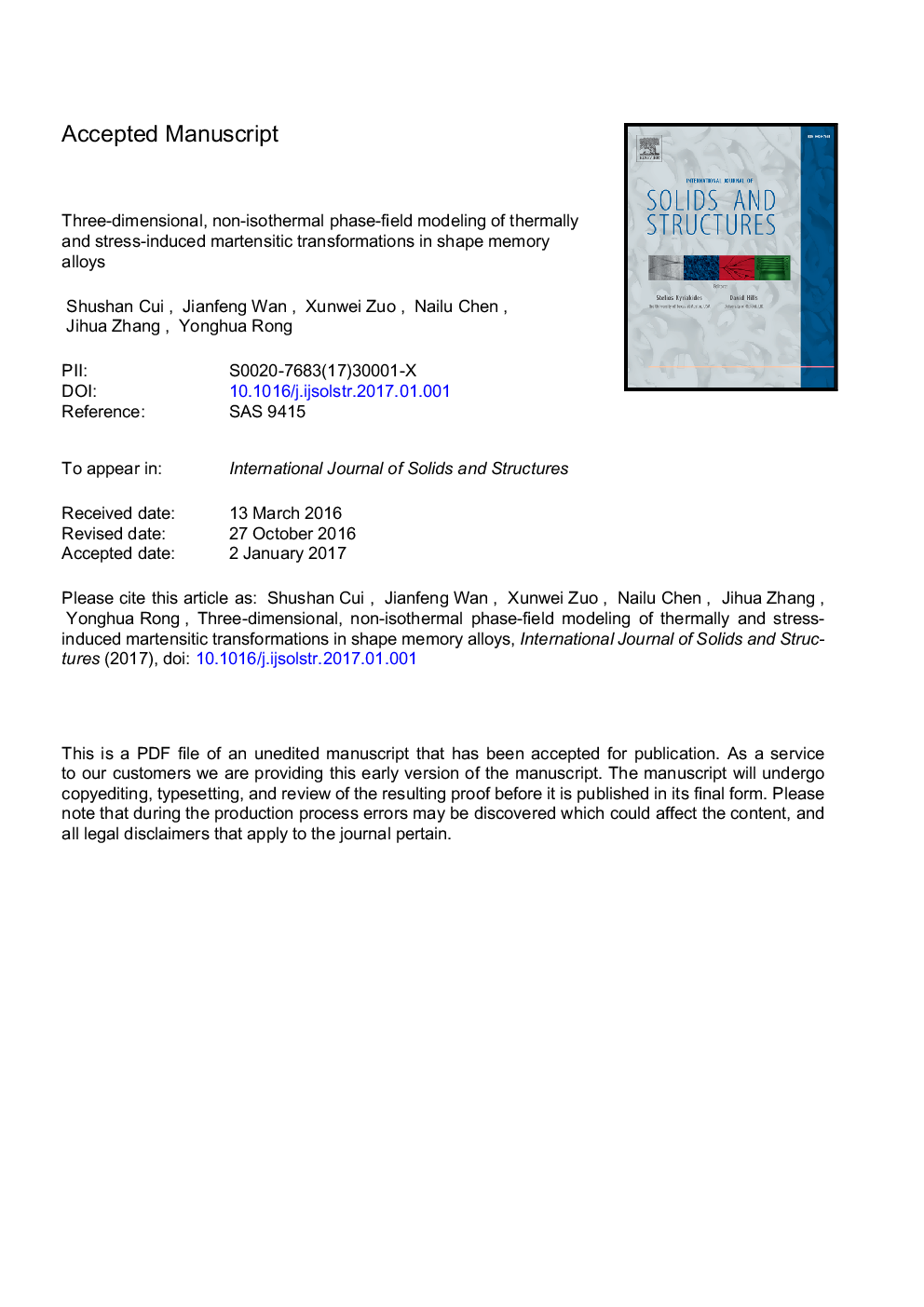| Article ID | Journal | Published Year | Pages | File Type |
|---|---|---|---|---|
| 4922596 | International Journal of Solids and Structures | 2017 | 36 Pages |
Abstract
The transition between austenite and martensite provides shape memory alloys (SMAs) with many unique properties. A three-dimensional, non-isothermal phase-field model was employed to comprehensively investigate the latent heat and elastocaloric effects in SMAs, which are originated from the thermoelastic martensitic transformations (MTs). We analyzed thermally induced MTs upon cooling and heating and stress-induced MTs at different temperatures in Mn-Cu alloys. It was observed that the size of twinned martensitic domain varied with temperature and large internal stresses resulted in thermoelastic equilibrium between austenite and martensite. The evolution of temperature field, caused by the latent heat effect, was obtained and the maximum temperature was found nearby the phase interface during the transformation. Twinned and single-variant martensites formed upon uniaxial tension and compression, respectively. Above the thermodynamic equilibrium temperature between austenite and martensite, with the occurring of reverse MT during unloading, superelasticity was realized. The localized temperature change and global elastocaloric effect during uniaxial loading and unloading were obtained and discussed. This model helps understand and explain the uniformity of temperature, stress and microstructural fields in the phase-field method.
Related Topics
Physical Sciences and Engineering
Engineering
Civil and Structural Engineering
Authors
Shushan Cui, Jianfeng Wan, Xunwei Zuo, Nailu Chen, Jihua Zhang, Yonghua Rong,
